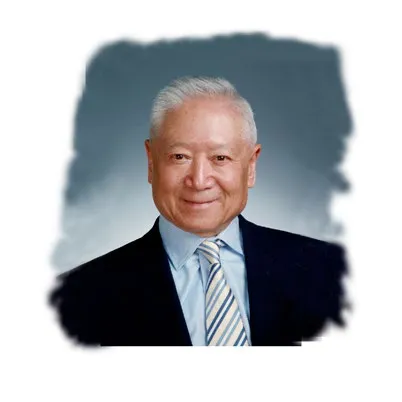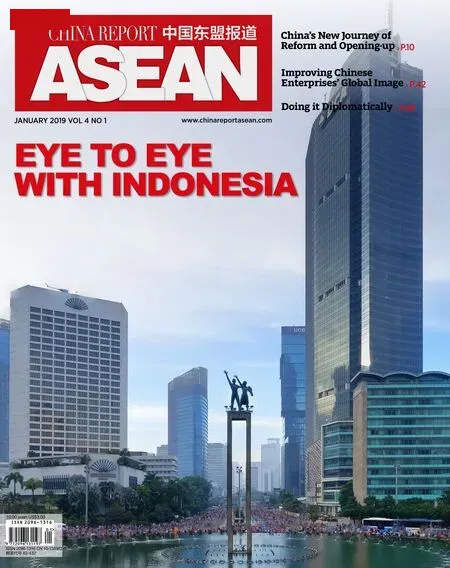ZHENG BIJIAN: UNDERSTANDING CHINA AT A NEW STARTING POINT OF REFORM AND OPENING-UP

China is poised at the beginning of a new leg of its reform and openingup journey. While comprehensively enhancing the strength of the Chinese people in production, defense,culture and social governance, it will highlight the strategic importance of their strength in market competition and innovation.
Starting Point
Where does China begin this new journey?
It has started off from the high point acquired through the historic progress made in the last 40 years of reform and opening-up, but with new principal contradictions in Chinese society.
Forty years ago, the Chinese Communists, with Deng Xiaoping as their chief representative, began the process of reform and openingup. This has turned out to be a key measure that has determined China’s future and left a profound impact on global history. The nation shifted focus from class struggle to economic development through reform and opening-up, which resulted in two historic turns: First, the country transformed from a highly centralized planned economy to a vigorous socialist market economy. Second, it has evolved from seclusion and semiseclusion to all-round opening-up.These two historic turns have from the very beginning been interconnected and mutually reinforcing—reform promoted opening-up, and openingup in turn boosted reform. Reform and opening-up connected the Chinese market with the market of the world,linking China and the world ever closely together.
As it has so tightly embraced reform and opening-up, China has become a responsible member of the world economic family through its participation in economic globalization and global governance.It has charted a path of peaceful development to build socialism with Chinese characteristics independently,characterized by its connection rather than separation from globalization. On this path, China has created a series of economic miracles, rapidly growing into the second largest economy in the world. Meanwhile, China has lifted more than 700 million people out of poverty and provided other developing countries with valuable experience of rapid development without polarization. On this path,socialism with Chinese characteristics has entered a new era.
To understand where China started the new journey requires understanding the historic progress China has made in reform and opening-up. At the same time, it should not be overlooked that China remains a big developing country.
China’s economic aggregate has grown from 360 billion yuan (US$55 billion) in 1978 to 82 trillion yuan(US$12 trillion) in 2017, but its per capita GDP still ranks 70th in the world. The incomes of urban and rural residents have maintained a rapid growth, but a big urban-rural income gap remains. In 2017, per capita income of urban residents was 36,396 yuan (US$5,600), while the disposable income of rural residents was 13,432 yuan (US$2,065), a 2.71-fold difference. China is already a major manufacturing country globally, but its overall industrial development remains at a medium-low level in the global context. It is already among the world leaders in investment in science and technology and the number of registered technology patents, but it is still lagging far behind in many aspects in technological innovation, especially original core innovation. It has lifted 700 million people out of poverty, but 30 million still live in extreme poverty.
All of this data shows that reform still must deepen, and China must open wider to the outside world.High-speed development should shift into high-quality development.After meeting the people’s needs for daily necessities such as clothing,food, housing and transport, focus should be shifted from quantity to quality. Unbalanced and inadequate development has become the main constraining factor hindering meeting people’s ever-increasing needs for a better life. It is against this backdrop that China has embarked on its new journey of reform and opening-up.
Destination
Where does this new journey lead?
The goal is clear: To complete construction of a moderately prosperous society in all respects by 2020 and transform China into a modern socialist country that is strong,prosperous, democratic, culturally advanced and harmonious, which would herald the great renewal of the Chinese nation by 2050.
It should be noted that China has no intention to dominate the world, but only aspirations to develop itself, as it continues to avoid posing any threat to any other country. To achieve the goal,China will comprehensively enhance the strength of the Chinese people in production, defense, culture and social governance. At the same time, it will highlight the strategic importance of their strength in market competition and innovation.

China is clearly a huge market. Not only is it huge in physical size, but also in strength and potential. China has a population of nearly 1.4 billion,a reserve balance of 180 trillion yuan(US$30 trillion), the largest middleincome group in the world with enormous consumption capacity and more than 800 million internet users who have become a strong driving force in the new smart market. There is also a new consumer demand inspired by new supply, which is still growing.
At the same time, this potential of the market exists among the general public and especially among emerging labor force. It is an unstoppable force,with a formidable strength to promote growth, motivation and attraction. It is also a big magnetic field that can attract new technology from the United States and other countries around the world.This kind of strength in a market will provide endogenous impetus for the sustained development of China.
China is making substantial adjustment to its modernization strategy by focusing on urbanization.It is carrying out targeted poverty reduction and alleviation to ensure that by the year 2020, all rural residents living below the current poverty line are lifted out of poverty.At the same time, it is pursuing a rural revitalization strategy to attract capital, technology, talents and other factors of production to rural areas to increase the income of rural residents, improve rural economic and social development and form a new pattern of urban-rural integration and development. If this strategy succeeds,a larger Chinese market will emerge in the world. Based on its considerable strength in production, defense,culture and social governance, China is gaining more strength in the modern market. Under the leadership of the CPC, which is following a peoplecentered development philosophy, the development of China’s big market with strength in many different aspects is a huge strategic force.
Meanwhile, innovation-driven development has become China’s national strategy. Innovation ranks first in a new development philosophy featuring innovative, coordinated,green and open development.Innovative talents are thriving in China. The formation of new growth drivers in the process of innovation has become a highlight of the economic transformation. Furthermore, China has seen breakthroughs in many major projects related to science and technology, which is already providing powerful support for sustained strength in innovation.

The first imported Volvo cars arrive at the Port of Xi’an in northwest China after being transported by the China-Europe freight train that connects Xi’an with Ghent, Belgium, on June 13, 2018.
Rapid growth of the economy requires immediate institutional reform and innovation. The reform plan of the Third Plenary Session of the 18th CPC Central Committee is being fully implemented. Reform of Party and state institutions is advancing at the largest scale since the beginning of reform and opening-up. The government is steadfastly streamlining administration, delegating more powers, improving regulation,providing better services, further widening market access, improving transparency and exercising fair and impartial regulation to create a market environment in which companies of all forms of ownership, whether Chinese or foreign-owned, are treated as equals and compete on a level playing field. Collectively, such efforts enhance China’s strength in market competition and innovation.
How will China interface with the world along this new journey?This is also a major concern of the international community. The classic response has always been: China will never seek hegemony in the world. The updated version is: China is working to build a community with a shared future for mankind together with the people of all countries.
The overall international situation is developing in a dual nature (the law of the unity of opposites). On one side, the trend of economic globalization and multi-polarization is more obvious. A vast number of developing countries have developed peacefully together while developed countries have further developed, gradually evening out the global balance of power. On the other side, geopolitical instability and various forms of con flict, including the con flict as a result of the combination of populism and hegemonism in international relations, are unavoidable. We must be prepared for this dual nature in the new situation to achieve success for our cause.

